For cyclists, achieving the perfect balance of comfort and performance is essential, and one of the most critical components in this pursuit is the cycle saddle. The right saddle can drastically enhance your riding experience, transforming long, arduous rides into enjoyable journeys.
Choosing the right cycle saddle starts with understanding its impact on comfort and performance. A high-quality saddle is designed to minimize discomfort and maximize efficiency, making each ride more pleasurable and less taxing on your body. Features such as ergonomic design, lightweight construction, and adjustability are key aspects to consider.
An ergonomic design is paramount for reducing pressure on sensitive areas, ensuring that your weight is evenly distributed. This helps prevent numbness and discomfort during long rides. Additionally, saddles made from lightweight materials like carbon not only contribute to a lighter bike overall but also offer durability and strength, crucial for withstanding the stresses of cycling.
The Trifox CS100 carbon bike saddle exemplifies these high-quality features. Its agreeable design prioritizes rider comfort with contours that support your natural posture, reducing strain on the back and hips. Crafted from carbon, the CS100 is incredibly light, helping you maintain speed and agility without compromising on durability.
Adjustability is another essential feature of a top-tier saddle. Being able to fine-tune the saddle's position allows you to find the perfect alignment for your riding style and body type, further enhancing comfort and performance. This customization ensures that each ride is tailored to your needs, reducing the likelihood of saddle sores or other discomforts.
When selecting a saddle, it's important to consider your individual needs and preferences. Factors such as the type of cycling you engage in, your riding position, and your body measurements should all play a role in your decision-making process. Testing different saddles and consulting with cycling professionals can offer valuable insights into finding the perfect fit.

In conclusion, investing in a high-quality saddle like the Trifox CS100 can significantly enhance your cycling experience. By choosing a saddle that prioritizes comfort, leveraging ergonomic design and lightweight materials, you can improve your performance and enjoyment on every ride. Consider upgrading your saddle to experience the difference a well-chosen component can make. Happy cycling!
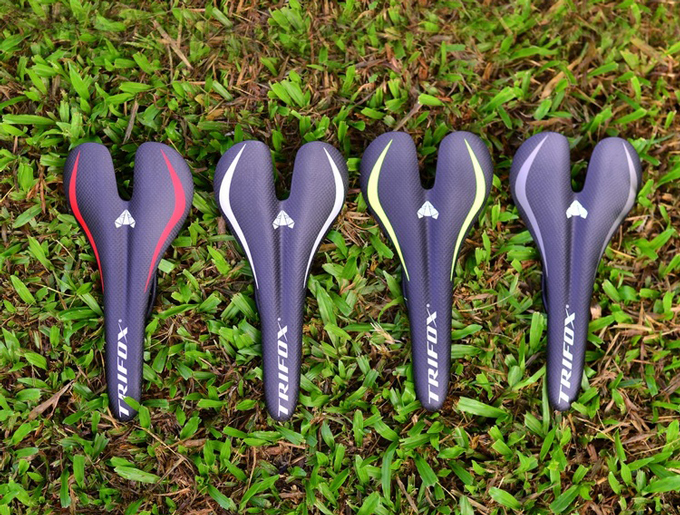
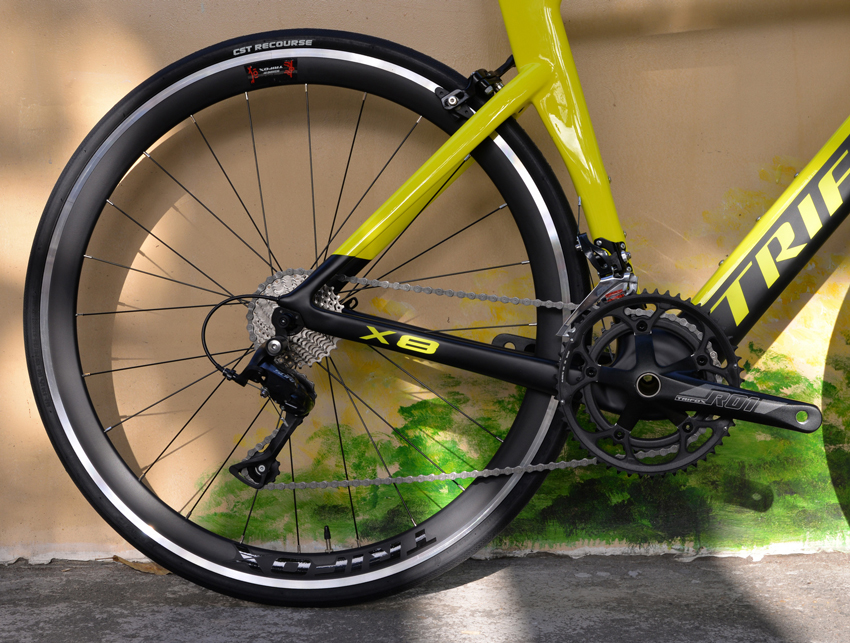
In the world of cycling, speed enthusiasts and competitive racers are always on the hunt for equipment that can give them an edge. Among the many components that can impact performance, aero road wheels stand out as a potentially transformative upgrade.
But are they the secret to boosting your cycling speed? Let's delve into the benefits of these wheels and explore how they can enhance your ride.
Aero road wheels are specifically designed to reduce aerodynamic drag, which is the force opposing a cyclist's forward motion. By minimizing this resistance, aero wheels help maintain higher speeds with less effort.
The key to their effectiveness lies in their deep-section rims, which cut through the air more efficiently than standard wheels. This design reduces the vortex effect, where turbulence is created behind the wheel, slowing you down. Instead, the streamlined shape of aero wheels allows for smoother airflow, enabling cyclists to conserve energy and maintain momentum.
The use of carbon fiber in aero wheels further enhances their performance. Carbon fiber is renowned for its lightweight and strong properties, making it an ideal material for wheel construction.
Trifox's carbon road bike wheels exemplify these advantages, providing a sturdy yet featherlight option that significantly improves acceleration and climbing efficiency. The decreased weight means less rotational mass, allowing for quicker acceleration and easier maintenance of high speeds.
For competitive cyclists, every second counts. Aero road wheels offer a measurable advantage in time trials and race situations, where slicing through the air can mean the difference between winning and losing. The aerodynamic benefits become even more pronounced at higher speeds, making these wheels a coveted choice for those looking to improve their competitive edge.
However, it's important to choose the right wheelset for your specific cycling goals. While aero wheels shine on flat courses and in windy conditions, riders who frequently tackle steep climbs may prioritize weight over aerodynamics. Thus, understanding your riding style and the typical terrain you encounter is crucial when selecting the perfect wheelset.
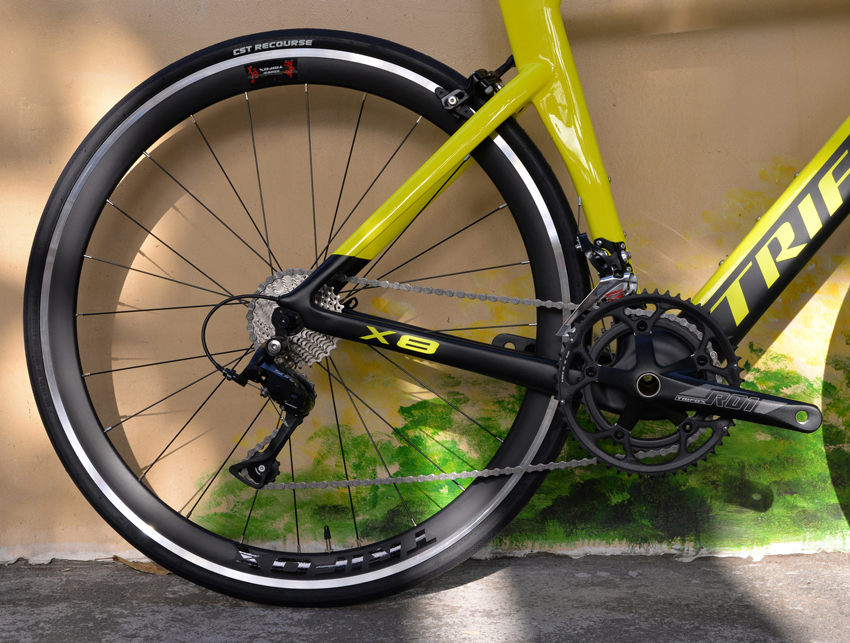
Aero road wheels can indeed be a game-changer for speed enthusiasts. By reducing drag and utilizing lightweight carbon construction, they offer an effective means to boost cycling speed and performance.
Whether you're a dedicated racer or a casual rider seeking to elevate your cycling experience, investing in a quality set of aero wheels like those from Trifox could be the key to unlocking new levels of speed on the road. Ultimately, these wheels provide more than just an aerodynamic advantage—they offer the potential to transform how you ride and race.
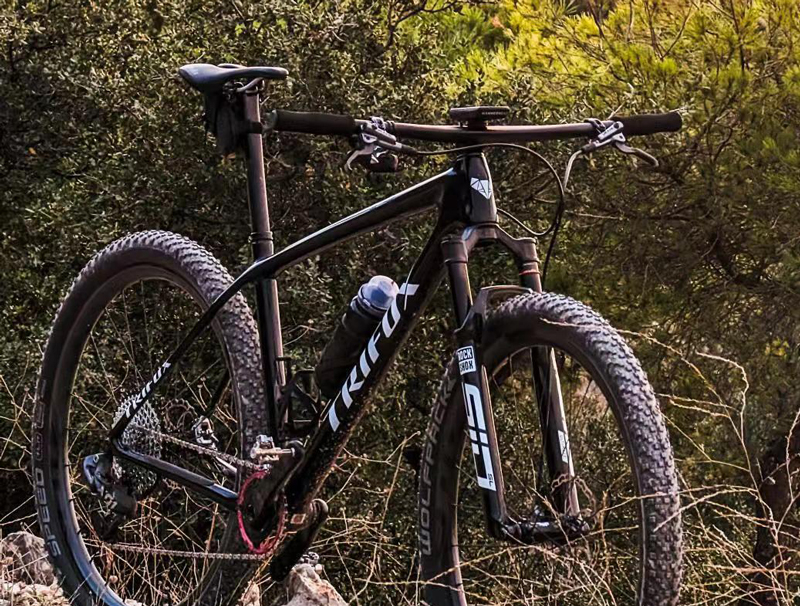
Choosing and installing the right bike bracket is crucial for ensuring optimal performance and safety on any cycling adventure. The bike bracket, often referred to as the bottom bracket, is a critical component connecting the bike's crankset to its frame, allowing for smooth and efficient pedaling. Selecting the appropriate bracket not only enhances the cycling experience but also prolongs the life of your bike.
When choosing a bike bracket, compatibility is key. The first step is to identify the type of bike frame and components you have. Different frames require specific bracket types, such as threaded or press-fit, and understanding your bike's specifications is essential.
Always refer to your bike's manual or consult with the manufacturer to ensure compatibility. For example, Trifox Bike, known for their high-quality carbon bike frames, provides detailed guidelines on the suitable brackets for each of their models, ensuring a perfect fit and maximum performance.
Once you have identified the right bracket, installation is the next step. Here's a step-by-step guide to help you through the process:
1. Gather Tools: Ensure you have the necessary tools, including a bottom bracket tool, torque wrench, and grease.
2. Remove the Crankset: Begin by removing the pedals and crankset from the bike frame. This may require a crank puller tool depending on your bike model.
3. Clean the Frame: Thoroughly clean the bottom bracket shell to remove any debris or old grease that could affect the installation process.
4. Install the Bracket: Apply a light layer of grease to the threads, if applicable. Use the bottom bracket tool to carefully screw in the bracket, ensuring it is tight but not overtightened, as this can damage the threads.
5. Reattach the Crankset: Once the bracket is securely in place, reattach the crankset by reversing the removal process. Ensure all components are tightly secured.
Common mistakes to avoid include neglecting to check compatibility, insufficient cleaning of the bracket area, and over-tightening the bracket, which can lead to damage.
With expertise in the field, Trifox Bike offers a range of compatible bike brackets designed to work seamlessly with their carbon frames. Their commitment to quality ensures that each component meets high performance standards, providing cyclists with a reliable and efficient riding experience.
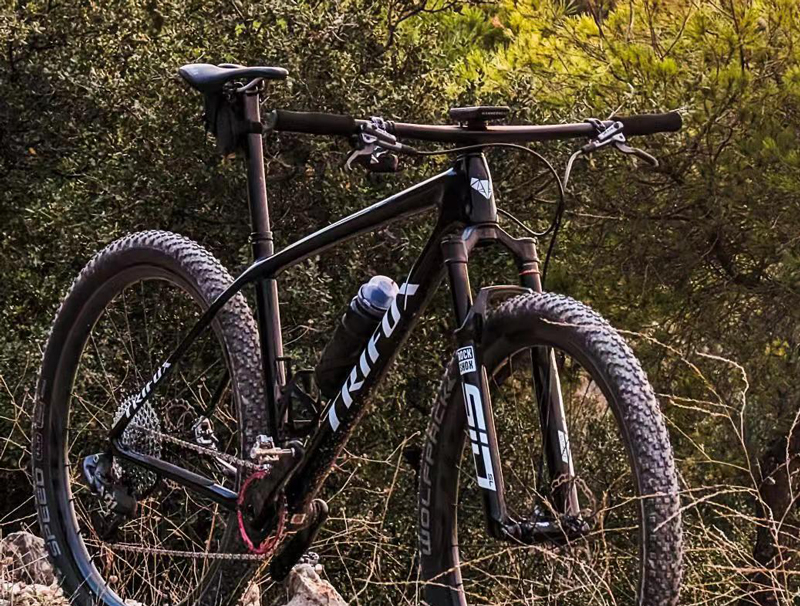
By following these tips and steps, cyclists can confidently choose and install the right bike bracket, enhancing their bike's performance and longevity.
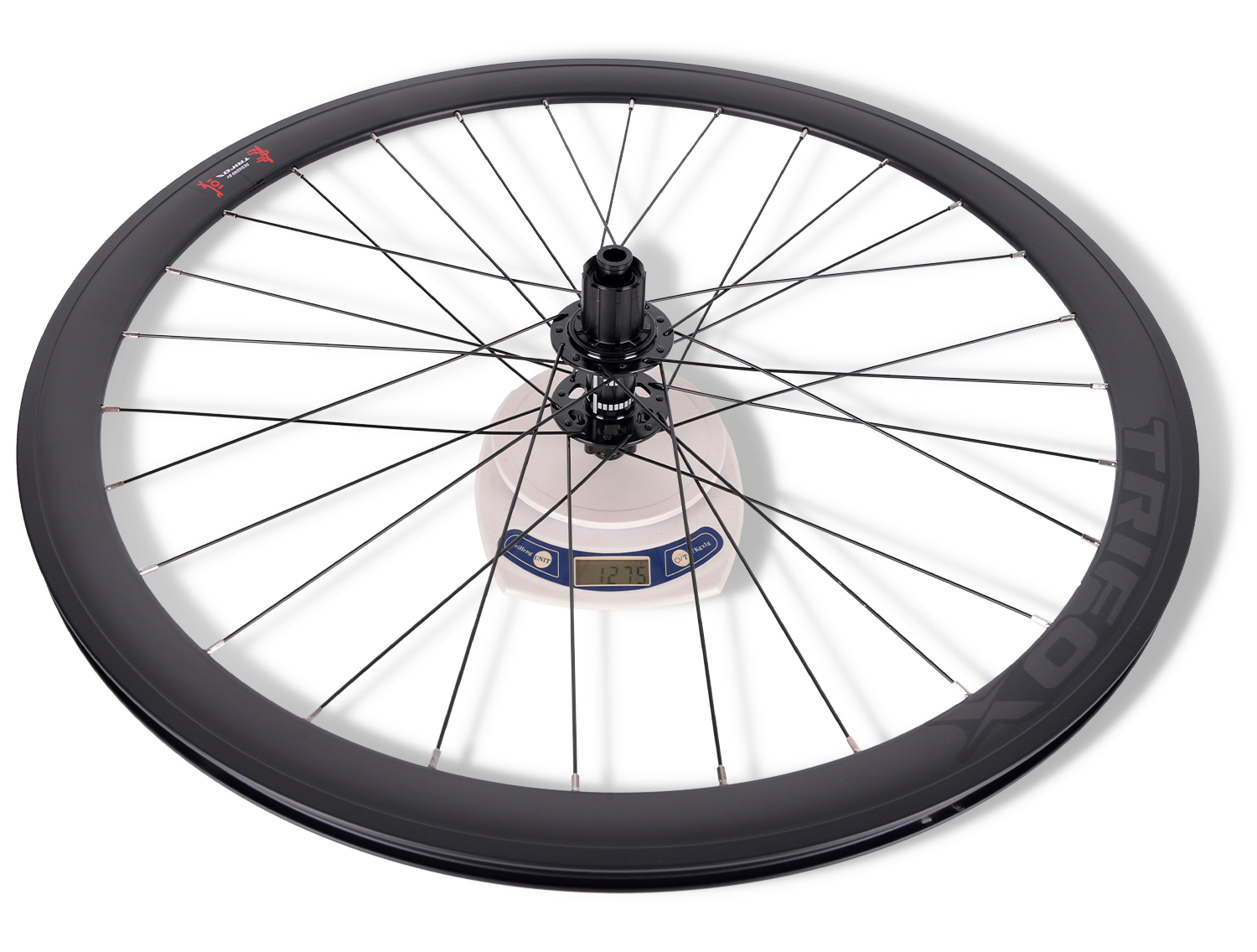
Upgrading your road bike's wheelset can significantly enhance your cycling performance, providing not only improved speed and efficiency but also better handling and ride quality. A well-chosen wheelset upgrade can be one of the most impactful modifications you make to your bike, transforming your riding experience.
Benefits of Upgrading Your Wheelset:
1. Increased Speed and Efficiency: Lighter wheels reduce rotational weight, making it easier to accelerate and maintain speed. Aerodynamic wheelsets minimize air resistance, allowing for smoother, faster rides.
2. Enhanced Ride Quality: High-quality wheelsets offer better responsiveness and smoother handling. They can absorb road vibrations more effectively, leading to a more comfortable ride over long distances.
3. Improved Durability: Upgrading to a robust wheelset ensures greater reliability and longevity, especially crucial for riders tackling various terrains and conditions.
Key Factors to Consider When Choosing a New Wheelset:
1. Material: Wheelsets are commonly made from carbon or alloy. Carbon wheels are lighter and more aerodynamic, ideal for competitive cyclists. Alloy wheels, such as those from TRIFOXBIKE, offer a great balance of performance and affordability, making them a favorite among many cyclists.
2. Rim Depth: Deeper rims provide aerodynamic benefits, making them suitable for flat terrains and time trials. However, they may be susceptible to crosswinds. Shallower rims are more versatile and handle better in varied conditions.
3. Spoke Count and Pattern: More spokes generally mean a stronger wheel, which is beneficial for heavier riders or rough terrain. The pattern and tension affect wheel strength and aerodynamics.
4. Compatibility: Ensure the new wheelset is compatible with your existing bike components, such as the cassette and brakes (rim or disc).
Tips for Installation and Maintenance:
1. Professional Installation: Have your new wheelset installed by a professional or follow detailed instructions to ensure proper alignment and tension, which are critical for performance and safety.
2. Regular Maintenance: Keep your wheels clean and free of debris. Regularly inspect for any signs of wear or damage, and ensure spokes are properly tensioned.
3. Tire Pressure: Maintain optimal tire pressure for your new wheels to enhance performance and prevent flats.
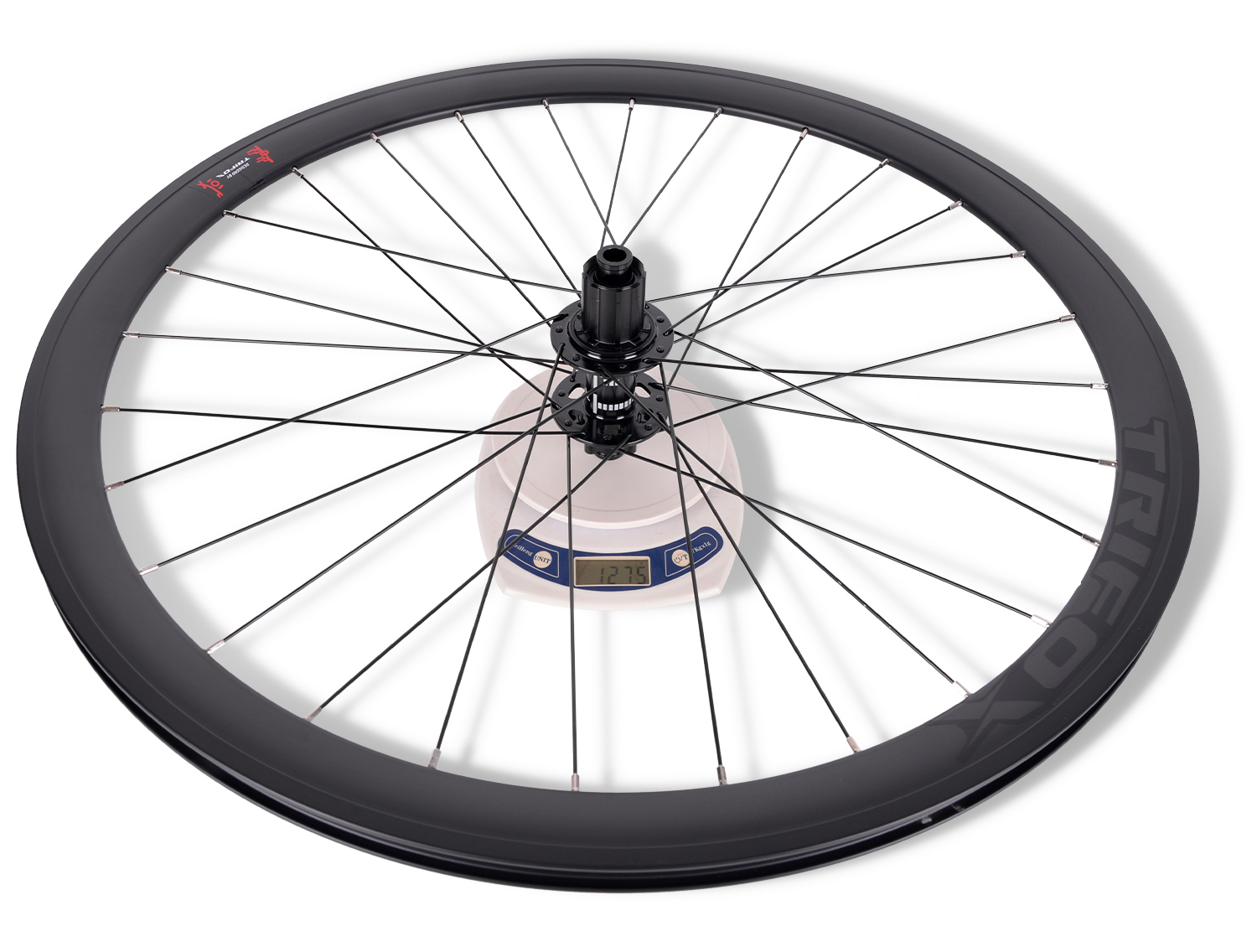
TRIFOXBIKE's alloy road wheels are an excellent example of a high-quality upgrade. Designed for reliability and performance, these wheels can elevate your cycling experience significantly. To explore TRIFOXBIKE's alloy road wheels and find the perfect fit for your cycling needs, visit their product page: TRIFOXBIKE Alloy Road Wheels.
By carefully selecting and maintaining your upgraded wheelset, you can enjoy a substantial boost in your road biking performance, making every ride faster, smoother, and more enjoyable.

Selecting the perfect XS frame road bike is crucial for cyclists who seek efficiency, comfort, and optimal performance.
The frame size is one of the most important factors affecting how well you can ride, especially for those with smaller builds. Here's how to ensure you choose the right XS frame for an efficient ride.
1. Importance of Frame Size:
The frame size directly impacts your cycling efficiency. An XS frame is designed to cater to shorter riders, offering better balance and control. A well-fitted frame ensures that your energy is effectively transferred to the bike, enhancing speed and reducing fatigue over long rides. Riding an incorrectly sized bike can lead to discomfort and inefficient pedaling, making size selection vital.
2. Tips for Choosing the Right XS Frame:
Measure Your Inseam: Start by measuring your inseam to determine the correct standover height for the bike. This ensures you can comfortably mount and dismount the bike.
Consider Reach and Stack: Ensure the reach (distance from the saddle to the handlebars) and stack (height of the handlebars) are appropriate for your height. This affects your riding posture and comfort.
Test Ride: If possible, test ride different models to see which frame geometry feels most comfortable. Pay attention to how the bike handles and your ease of maneuverability.
Consult Experts: Seek advice from cycling experts or bike shop professionals who can provide personalized recommendations based on your body dimensions and riding style.
3. Impact on Comfort and Performance:
A properly fitted XS frame enhances comfort by reducing strain on your back and neck, allowing for better focus and endurance. It also improves performance by ensuring you can maintain an aerodynamic position, especially crucial for long-distance road cycling. An efficient ride means you can enjoy cycling longer and faster with less effort.

TRIFOXBIKE offers an impressive range of XS frame road bikes that cater to the needs of smaller riders. Their bikes are designed with precision, focusing on lightweight materials and advanced ergonomics to ensure maximum efficiency and comfort. To explore TRIFOXBIKE's selection of road bikes and find the perfect fit for an efficient ride, visit their product page: TRIFOXBIKE Road Bikes.
By choosing the right XS frame road bike, you can achieve a harmonious balance between speed, comfort, and performance, making your cycling experience both enjoyable and efficient.
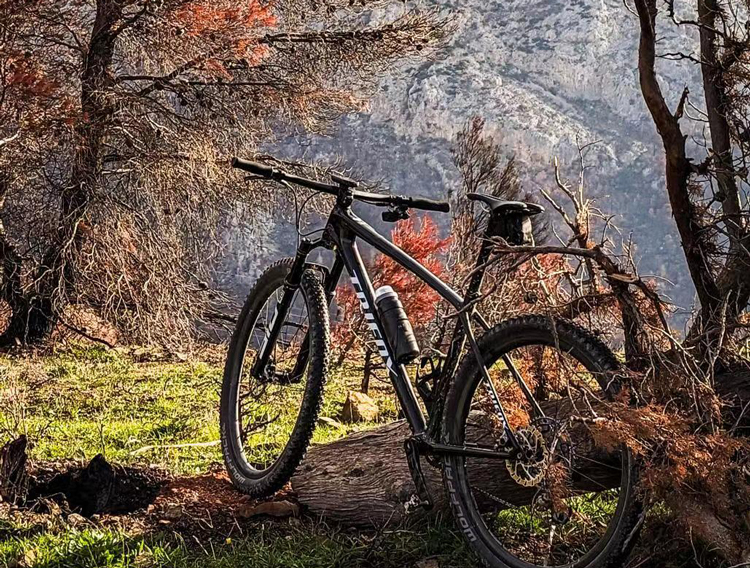
Optimizing your race bike for maximum performance involves making strategic choices about its components and setup. Trifox offers a range of carbon mountain bikes that cater to racers looking for speed, durability, and efficiency.
Firstly, selecting the right frame is crucial. Carbon frames like those offered by Trifox significantly reduce weight while maintaining strength, crucial for competitive racing.
A lighter bike allows for faster acceleration and easier climbing, giving you an edge over competitors.
Wheels also play a vital role in performance. Carbon wheels are not only lighter but also provide better aerodynamics. This can lead to increased speed and reduced effort over long distances. Choosing the right tires based on the terrain is equally important.
For rough terrains, consider wider tires that offer better grip, while narrower tires are suitable for smoother tracks, enhancing speed.
Adjusting your bike fit is another key aspect. Ensuring your saddle height, handlebar position, and pedal alignment are optimized for your body can improve comfort and efficiency, reducing fatigue during long races.
Regular maintenance of components is essential to keep your bike at peak performance. This includes checking the drivetrain for wear, ensuring the brakes are responsive, and keeping the bike clean to prevent the buildup of dirt which can affect operation.
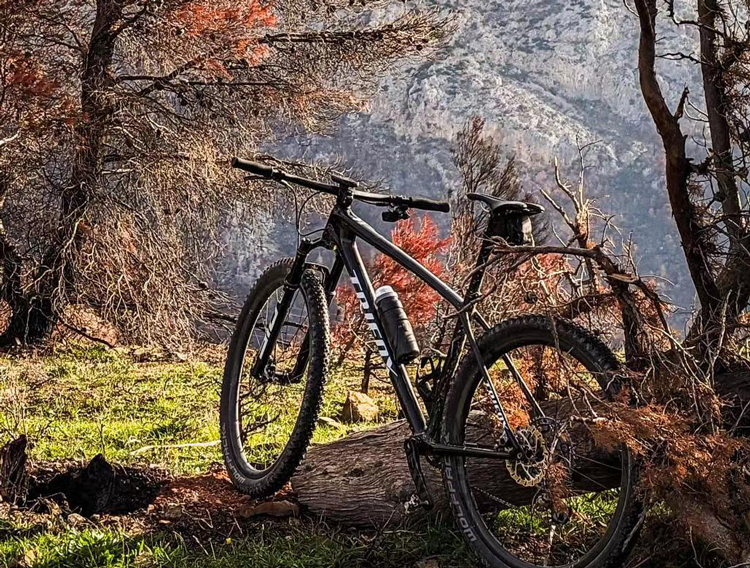
By focusing on these elements—choosing the right materials, adjusting for optimal fit, and maintaining your bike—you can enhance your race bike’s performance, ensuring speed, reliability, and a competitive edge on the track.
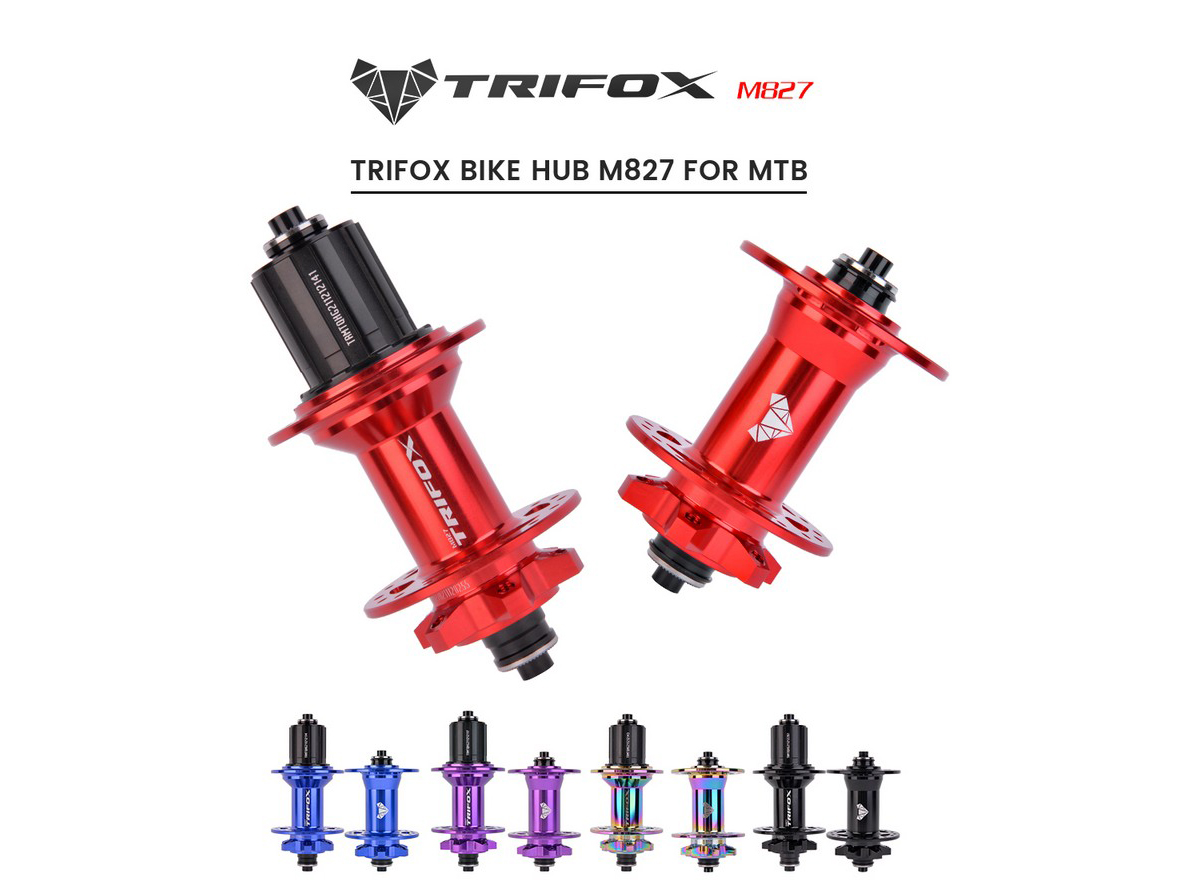
Enhancing your bike's performance can often be as simple as upgrading to straight spokes hubs, a choice that significantly impacts your cycling experience. Trifox's range of bicycle hubs offers the perfect blend of durability and performance, ideal for those looking to replace or upgrade their current setup.
Straight spokes hubs are a popular choice among cyclists for several reasons. Firstly, they provide improved wheel strength. Unlike traditional J-bend spokes, straight spokes experience less stress and are less likely to break under pressure, ensuring more resilience and a longer lifespan for your wheels. This design enhances the overall robustness of the wheel, making it suitable for both road and off-road cycling.
Another advantage is the improved aerodynamics offered by straight spokes hubs. With fewer protruding elements, these hubs reduce air resistance, allowing for smoother and faster rides. This is particularly beneficial for competitive cyclists aiming to shave seconds off their time.
Maintenance is also easier with straight spokes hubs. Their simple design reduces the need for frequent adjustments and repairs, allowing you more time on the road and less in the workshop.
Trifox's hubs, made from durable aluminum, are compatible with most standard bikes, making them a versatile choice for various cycling styles.
Choosing the right hub is crucial for maximizing performance. Consider factors such as the type of cycling you engage in and the compatibility of the hub with your bike.
By selecting the appropriate hub, you can ensure a seamless fit and optimal performance tailored to your specific needs.
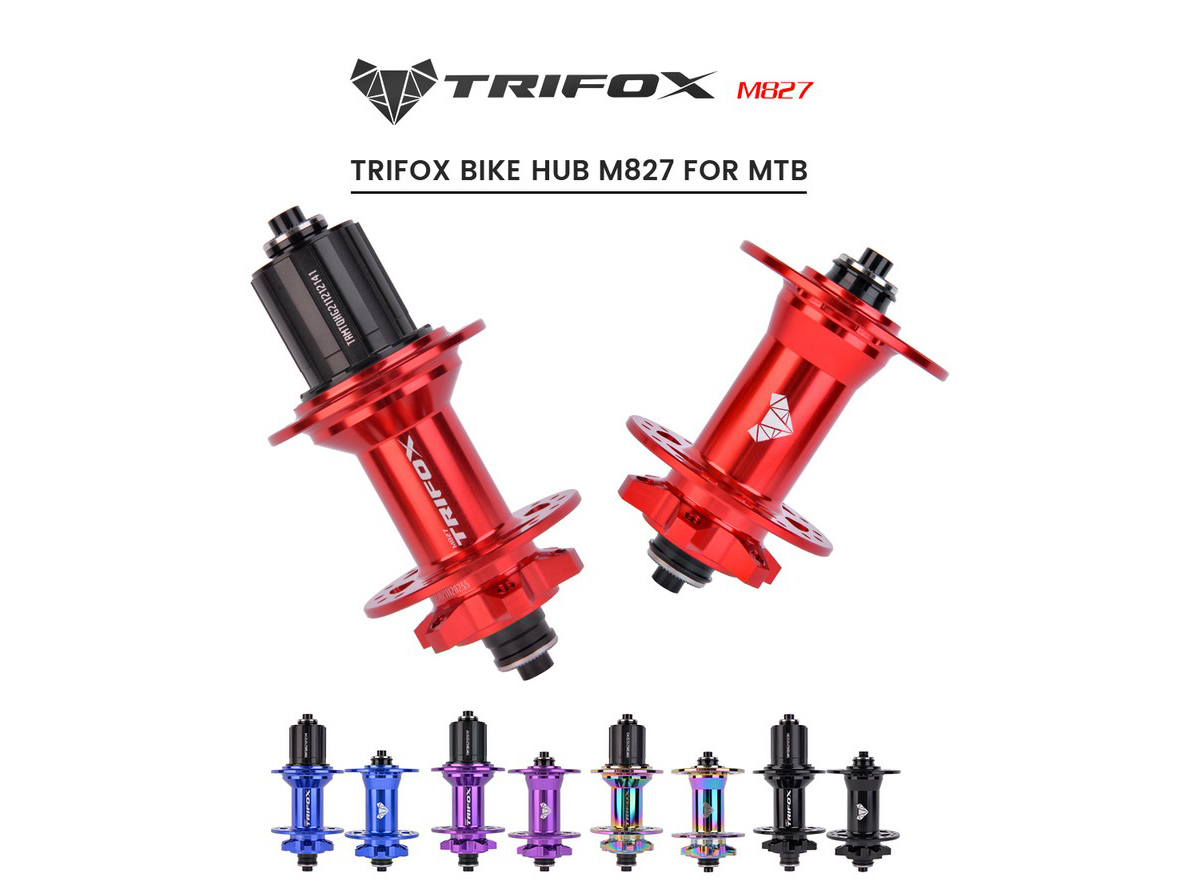
Overall, upgrading to straight spokes hubs is a smart investment in your cycling experience, offering enhanced strength, better aerodynamics, and reduced maintenance, all contributing to a more enjoyable and efficient ride.
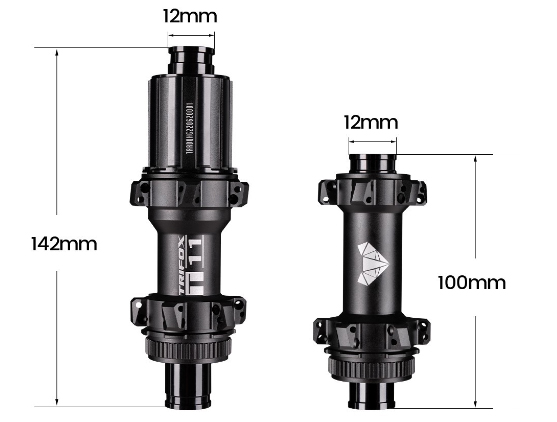
Choosing the right road hub for your bicycle is crucial for achieving optimal performance and enhancing your riding experience. A well-selected and maintained hub can significantly impact your bike's efficiency, speed, and reliability. Here’s a comprehensive guide on how to select and maintain the perfect road hub.
1. Understanding Road Hubs
A road hub is the central part of a bicycle wheel that connects the wheel to the bike frame and allows it to rotate freely. It consists of several components, including bearings, axle, and hub shell. When selecting a road hub, you’ll want to consider factors like material, weight, and type of bearings.
2. Selecting the Right Road Hub
Material
Road hubs are typically made from aluminum or carbon fiber. Carbon fiber hubs, like those offered by Trifox, are lightweight yet strong, providing excellent stiffness and reduced weight.
Bearings
Hubs can come with either sealed cartridge bearings or loose ball bearings. Sealed bearings are low maintenance and offer better protection against dirt and moisture, making them ideal for road cycling.
Compatibility
Ensure the hub is compatible with your bike’s wheel size and cassette type. The Trifox hubs are designed to fit various wheel sizes and are compatible with multiple drivetrain systems, ensuring a versatile fit for most road bikes.
Weight
For competitive cycling, every gram counts. Choose a lightweight hub to reduce the overall weight of your bike, improving acceleration and climbing efficiency.
3. Maintaining Your Road Hub
Regular Cleaning
Keep your hub clean by wiping it down after rides, especially in muddy or wet conditions. Use a soft cloth and mild detergent to remove dirt and grime.
Lubrication
Regularly lubricate the bearings to keep them running smoothly. Avoid over-lubrication as it can attract dirt and cause wear. High-quality hubs like those from Trifox come pre-lubricated, but periodic maintenance will extend their lifespan.
Inspection
Periodically inspect your hub for signs of wear or damage. Check for any play in the bearings, unusual noises, or rough rotation. If you notice any issues, address them promptly to prevent further damage.
Bearing Replacement
Over time, bearings may wear out and need replacement. Follow the manufacturer’s guidelines for replacing bearings. Trifox hubs are designed for easy servicing, making bearing replacement straightforward.
Torque Settings
Ensure bolts and axle nuts are torqued to the manufacturer’s specifications. Over-tightening can damage components, while under-tightening can lead to instability.
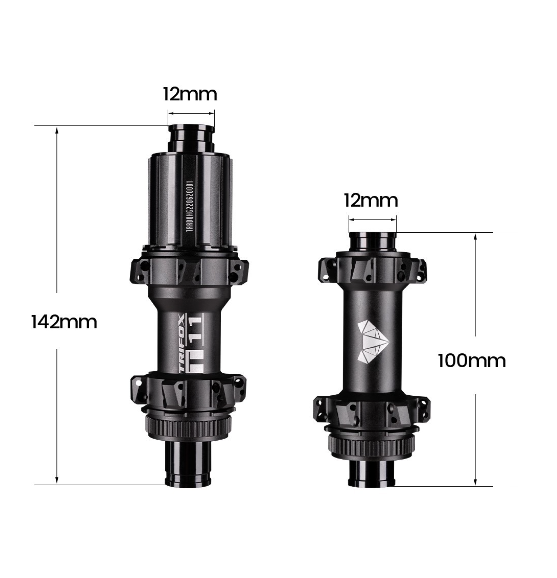
In conclusion, selecting and maintaining the right road hub involves understanding key components, considering compatibility, and performing regular maintenance. By choosing high-quality hubs like those from Trifox and following these maintenance tips, you’ll enjoy optimal performance and a smoother, more reliable ride. Invest in the right road hub today and experience the difference it makes in your cycling journey.
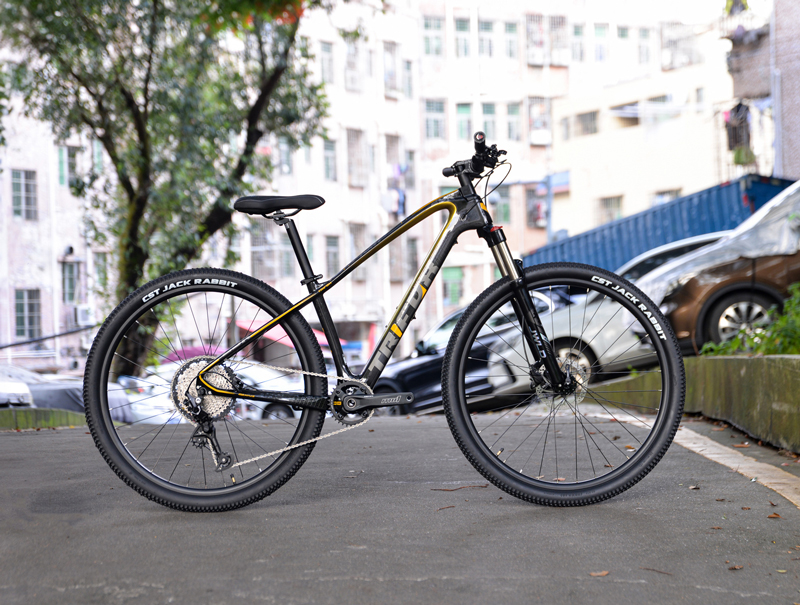
Building a bike with a high-quality hardtail frame can be an incredibly rewarding project, offering customization and performance tailored to your specific needs. Here's a step-by-step guide to help you get started.
1. Choose the Right Frame
Start with a reliable and high-quality frame like the Trifox Carbon MTB Hardtail Frame MFM200. Known for its lightweight construction and durability, this frame provides an excellent foundation for your build.
2. Gather Essential Components
Next, you'll need to gather all essential components:
Fork: Choose a suspension fork that matches your riding style.
Groupset: A high-quality groupset ensures smooth shifting and efficient power transfer.
Wheels and Tires: Select wheels that are strong yet light, along with tires suited for your terrain.
Brakes: Reliable disc brakes offer superior stopping power.
3. Assemble the Drivetrain
Install the bottom bracket and crankset first, followed by the chain and derailleur. Ensure everything is aligned correctly for optimal performance.
4. Install the Fork and Handlebars
Slide the fork into the head tube and secure it with the stem. Attach the handlebars, making sure they are at a comfortable height and angle.
5. Add the Wheels and Brakes
Mount the wheels onto the frame and install the disc brakes. Make sure the brakes are properly aligned to avoid any rubbing against the rotors.
6. Final Adjustments
Adjust the saddle height, handlebar position, and brake lever reach to fit your body perfectly. Tighten all bolts securely and check for any loose parts.
7. Test Ride
Before hitting the trails, take your new bike for a test ride. Ensure everything functions smoothly and make any necessary tweaks.
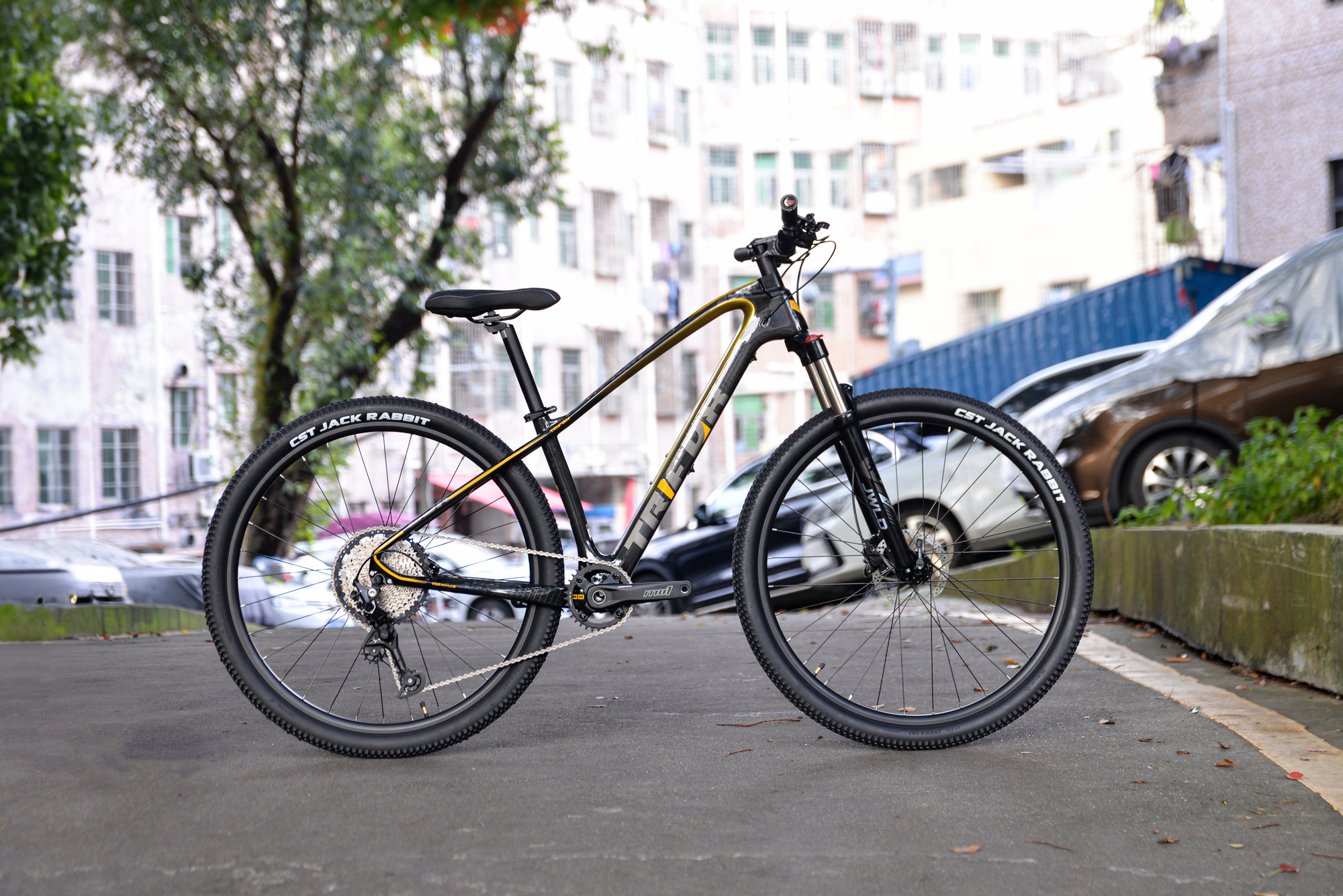
Conclusion
Building a bike with a high-quality hardtail frame like the Trifox Carbon MTB Hardtail Frame MFM200 is a fulfilling endeavor that results in a personalized, high-performance ride. Follow these steps for a successful build and enjoy the unmatched satisfaction of riding a bike you've built yourself. Happy trails!

























































